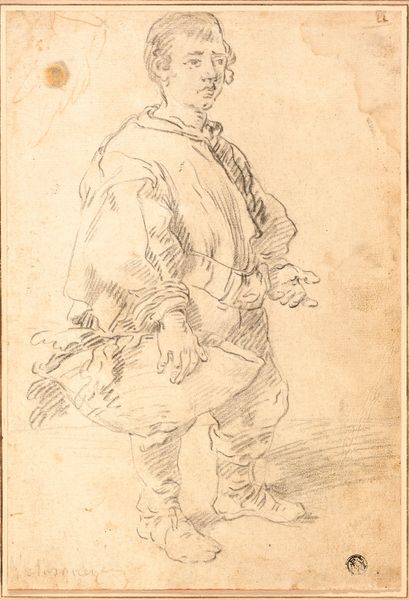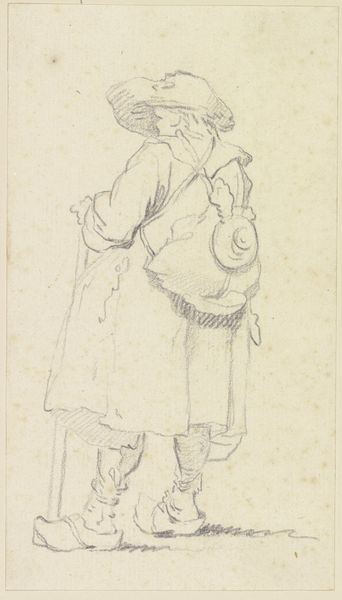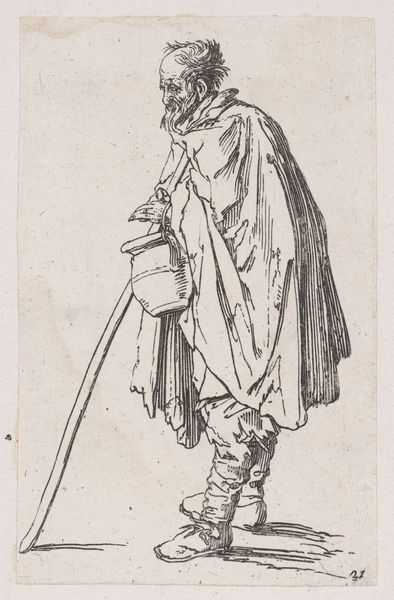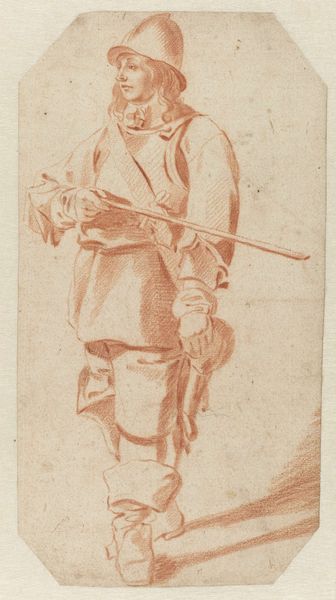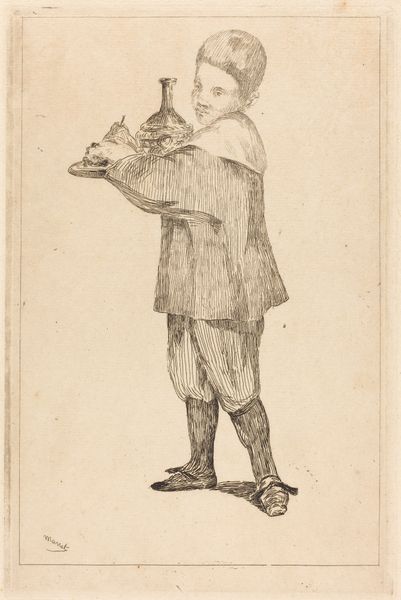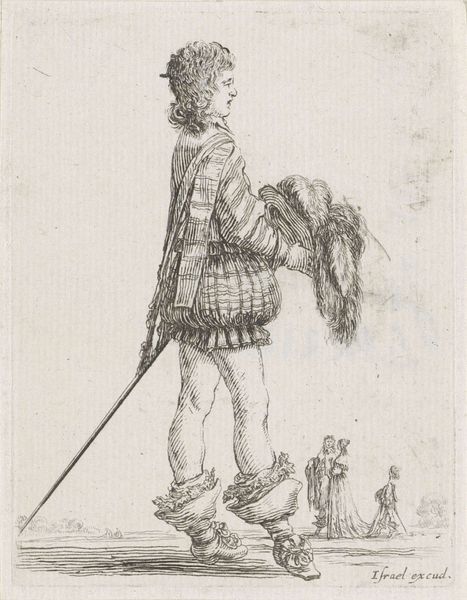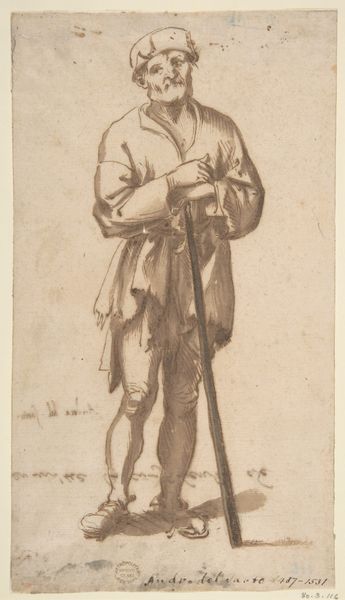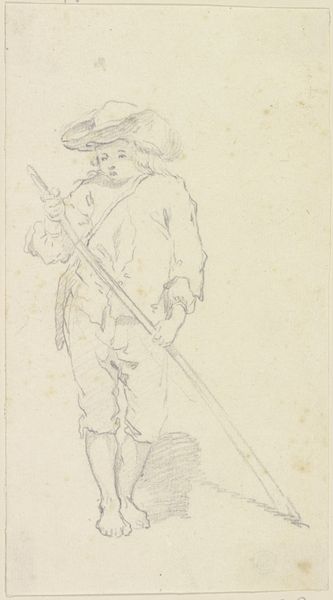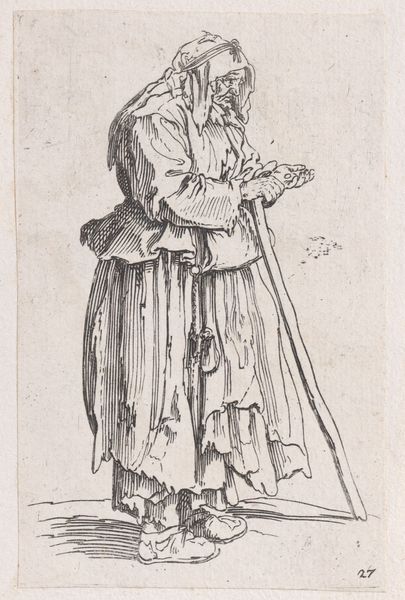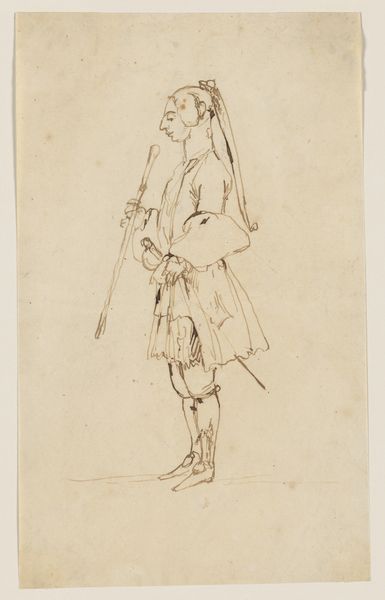
drawing, ink, indian-ink, chalk
#
drawing
#
amateur sketch
#
netherlandish
#
toned paper
#
light pencil work
#
baroque
#
pencil sketch
#
11_renaissance
#
personal sketchbook
#
ink
#
ink drawing experimentation
#
indian-ink
#
13_16th-century
#
chalk
#
sketchbook drawing
#
pencil work
#
watercolour illustration
#
sketchbook art
Copyright: Public Domain
Editor: Here we have Roelant Savery's "Walking Man with Knapsack," a drawing in ink, chalk, and Indian ink currently residing in the Städel Museum. I’m struck by how simple the figure is, almost like a quickly jotted memory. What catches your eye when you look at this piece? Curator: It’s fascinating how Savery uses the figure of the wandering man. He becomes a potent symbol. Think about the time, the late Renaissance transitioning into the Baroque. What figures loomed large in the cultural imagination? Editor: I suppose religious pilgrims, maybe merchants journeying for trade? Curator: Exactly! The traveler embodies both the spiritual quest and the earthly pursuit of knowledge and sustenance. The knapsack, the walking stick – these aren’t merely props. They signify burden, support, and the tools needed for life's journey, both physical and metaphysical. Doesn’t he almost remind you of depictions of wandering preachers and beggars? Editor: I see that! And with the suggestion of a sword visible beneath his garments, does he carry protection with him as well? Curator: A vital symbol. Perhaps signifying readiness to confront danger, both real and perceived. That uncertainty—where does he come from, where is he headed—resonates deeply. Think of the “Wanderer above the Sea of Fog.” What echoes do you see? Editor: Both depict someone in transit with hidden narratives—there’s always something deeply unknowable, even in the most plainly rendered images. Curator: Precisely. Savery reminds us of the enduring human impulse to seek, to wander, to question. It is like reading an illustrated proverb—simple, universal, and yet rich with multiple layers of cultural meanings. Editor: This has really opened my eyes to seeing how much narrative can be packed into a single figure in motion!
Comments
No comments
Be the first to comment and join the conversation on the ultimate creative platform.
